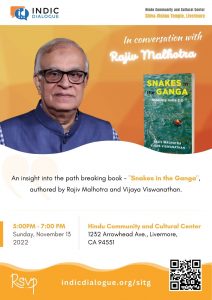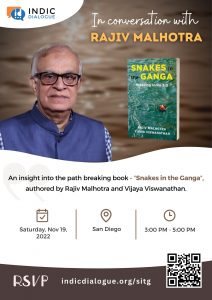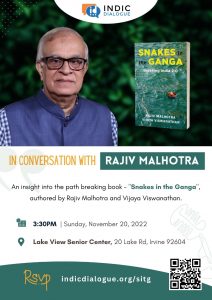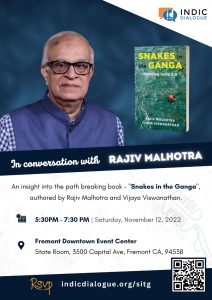
The Force Within – Exploring the Divine Feminine in Hinduism
For many in the West, Hinduism whispers tales of majestic temples and powerful male deities like Shiva and Vishnu. But beneath this captivating tapestry lies a vibrant undercurrent, pulsating with the energy of the divine feminine, embodied in the concept of Shakti. Unlike the singular, masculine God of many Western religions, this unique Hindu perspective offers a refreshing dance of masculine and feminine, where a vibrant tapestry of goddesses takes center stage, not just as symbols, but through engaging and often breathtaking religious practices.
Since the right term is Hindutva and not Hinduism (Hindutva encompasses the entirety of what the word “Hindu” signifies) I will continue to use the term Hindutva in this article.
Shakti isn’t simply a goddess; she’s the primordial cosmic energy that permeates everything, the animating force behind creation, existence, and dissolution. Imagine a universe not dictated by a single, powerful male figure, but rather one pulsating with the dynamic interplay of masculine and feminine energies. Shakti often personified through a spectrum of goddesses like Durga, Parvati, Kali, Lakshmi, and Saraswati, embodies this very principle.
Unlike monolithic religions with one central God, Hindutva offers a kaleidoscope of goddesses, each reflecting a unique facet of the divine feminine. Parvati, Shiva’s consort, represents unwavering devotion and nurturing love. Durga, the fierce warrior queen, embodies strength, protection, and the vanquishing of darkness. Kali, the dark goddess, signifies transformation, the destruction of negativity, and liberation from fear. Lakshmi, the goddess of prosperity, symbolizes abundance, good fortune, and auspicious beginnings. Saraswati, the goddess of knowledge, personifies wisdom, creative expression, and artistic flow. This multiplicity reflects the inherent complexity of the divine feminine, refusing to confine it to any single definition.
But Shakti isn’t just a passive embodiment of these qualities; she’s the active, dynamic force that awakens potential, empowers both male and female deities, and drives the very cycles of creation and transformation. This is beautifully symbolized in the deity Ardhanarishvara, who is half male (Shiva) and half female (Parvati), highlighting the interdependent nature of masculine and feminine principles.
This celebration of the divine feminine extends beyond mere symbolism. In many Hindu communities, particularly in the Southern part of India (Bharat) and Bengal, goddess worship holds a central place. Imagine standing barefoot in the ancient Meenakshi Amman Temple in Madurai, enveloped by vibrant colors and resonating chants as devotees offer flowers and prayers to the goddess Parvati. Or picture yourself amidst the joyous chaos of Durga Puja in Kolkata, witnessing the grand procession of Durga’s idol, accompanied by energetic drumbeats and vibrant dances. These festivals aren’t merely celebrations; they’re portals to connect with the divine feminine through rituals like Kumari Puja, where young girls are revered as embodiments of the goddess Durga, or Mangala Aarati, where devotees offer light to the goddess, symbolizing the dispelling of darkness and the invocation of blessings.
While interpretations and societal realities remain complex, the emphasis on the divine feminine has undoubtedly influenced gender roles in Hindutva. Traditionally, women have held significant spiritual and societal roles, including leadership positions in temples and participation in religious discourse. This contrasts with certain patriarchal interpretations of some religions where women’s roles are more restricted. However, it’s crucial to acknowledge the nuances. Hindutva is a diverse tapestry, and interpretations of the divine feminine vary across regions and sects. Recognizing this internal diversity is crucial for understanding the dynamic and multifaceted nature of the divine feminine in Hindutva.
Exploring the concept of Shakti in Hindutva offers a Western audience a fresh perspective on spirituality and gender. It challenges the notion of a singular, masculine God and highlights the significance of a dynamic balance between masculine and feminine energies. It challenges Western narratives of passive female deities and presents powerful goddesses who actively shape the universe. And it prompts us to reflect on our own understanding of gender roles and the diverse ways in which the divine can be manifested.
But the journey doesn’t end there. Delving deeper into specific goddesses, their myths, and symbols, offers an even richer experience. Imagine immersing yourself in the stories of Parvati’s unwavering devotion to Shiva, learning how Durga slayed the demon Mahishasura, or understanding Kali’s symbolic dance of creation and destruction. Each goddess carries a wealth of wisdom and inspiration, waiting to be unlocked.
And then there are the vibrant worship practices that go beyond the temples. Witness the auspiciousness of a Haldi ceremony, where brides are adorned with turmeric paste, invoking Parvati’s blessings. Observe the intricate Rangoli designs adorning thresholds, welcoming Lakshmi into homes. Even the wearing of sindoor by married women signifies the blessings of the goddess Parvati.
This exploration isn’t just about understanding another culture; it’s about discovering the Shakti within ourselves. Shakti represents the creative spark, the dynamic energy that resides within each of us, regardless of gender. By understanding and celebrating the divine feminine in Hindutva, we open ourselves to the possibility of unlocking our own potential and embracing our creativity, strength, and capacity for transformation. Shakti reminds us that the divine isn’t confined to a distant figure but pulsates within us, waiting to be awakened.
This journey into the divine feminine of Hindutva isn’t a passive observation; it’s an invitation to participate. Join a local satsang or meditation group, immerse yourself in devotional music, or simply explore the stories and symbols of the goddesses. As you engage with Shakti, you might find yourself questioning, reflecting, and ultimately, evolving.
Remember, Hindutva is a living tradition, constantly evolving and reinterpreted. Embrace the nuances, ask questions, and respect cultural boundaries. Ultimately, the exploration of the divine feminine is a personal journey, one that can lead to a deeper understanding of ourselves, our place in the universe, and the profound interconnectedness of all that is.



 RSVP – IRVINE, CA
RSVP – IRVINE, CA